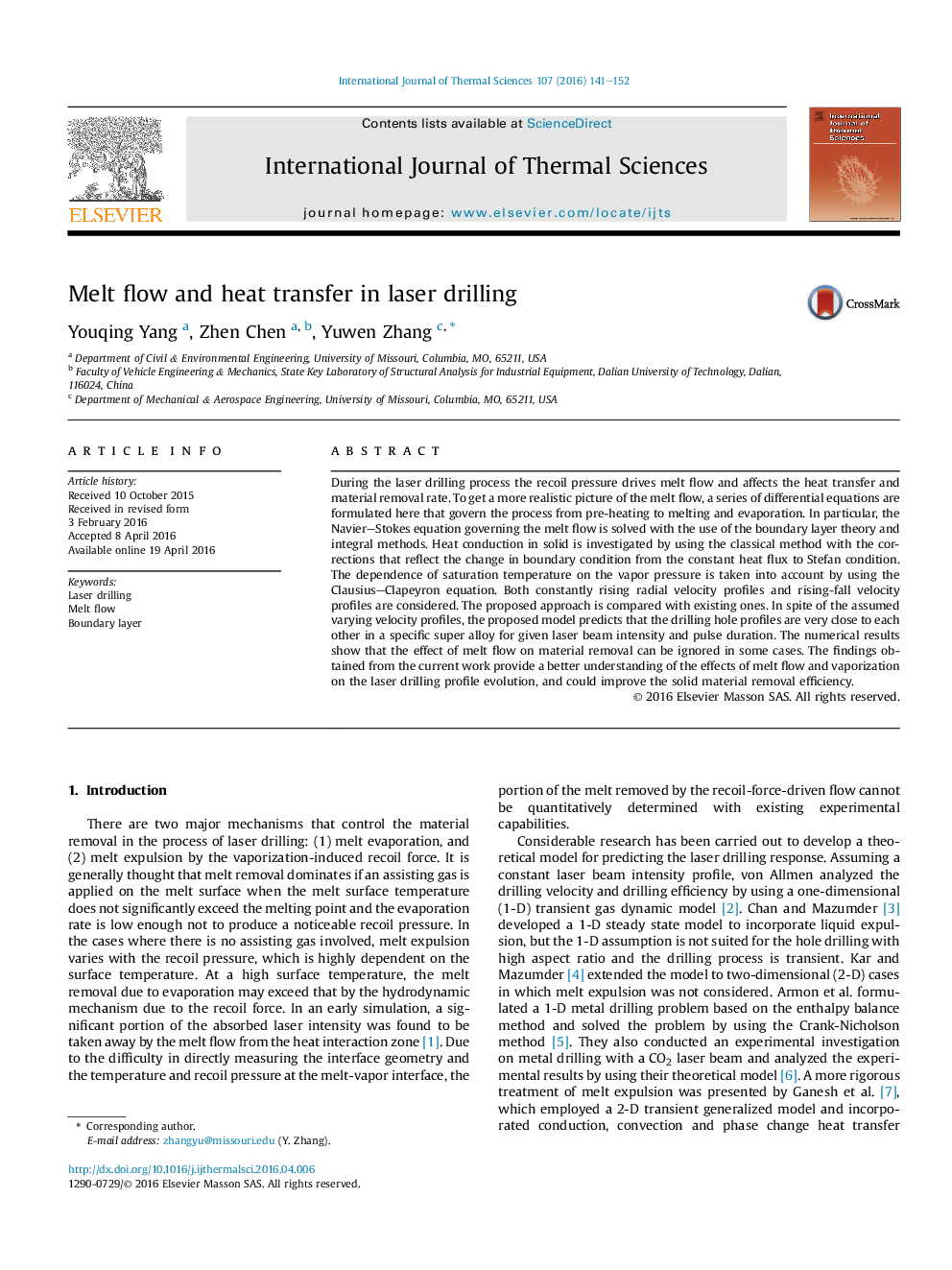| Article ID | Journal | Published Year | Pages | File Type |
|---|---|---|---|---|
| 668419 | International Journal of Thermal Sciences | 2016 | 12 Pages |
During the laser drilling process the recoil pressure drives melt flow and affects the heat transfer and material removal rate. To get a more realistic picture of the melt flow, a series of differential equations are formulated here that govern the process from pre-heating to melting and evaporation. In particular, the Navier–Stokes equation governing the melt flow is solved with the use of the boundary layer theory and integral methods. Heat conduction in solid is investigated by using the classical method with the corrections that reflect the change in boundary condition from the constant heat flux to Stefan condition. The dependence of saturation temperature on the vapor pressure is taken into account by using the Clausius–Clapeyron equation. Both constantly rising radial velocity profiles and rising-fall velocity profiles are considered. The proposed approach is compared with existing ones. In spite of the assumed varying velocity profiles, the proposed model predicts that the drilling hole profiles are very close to each other in a specific super alloy for given laser beam intensity and pulse duration. The numerical results show that the effect of melt flow on material removal can be ignored in some cases. The findings obtained from the current work provide a better understanding of the effects of melt flow and vaporization on the laser drilling profile evolution, and could improve the solid material removal efficiency.
